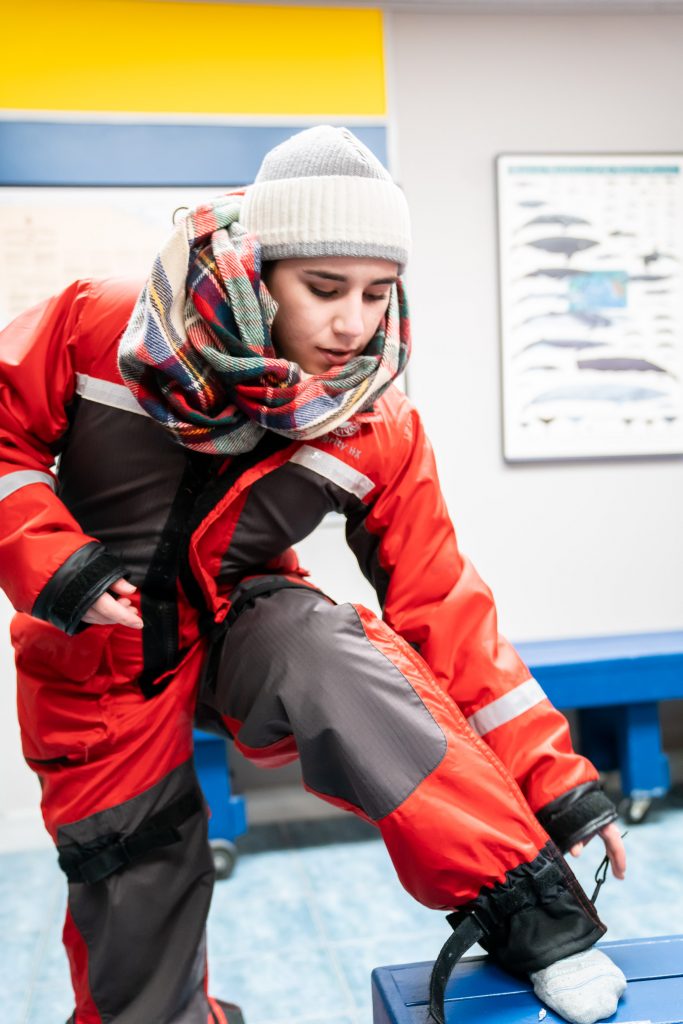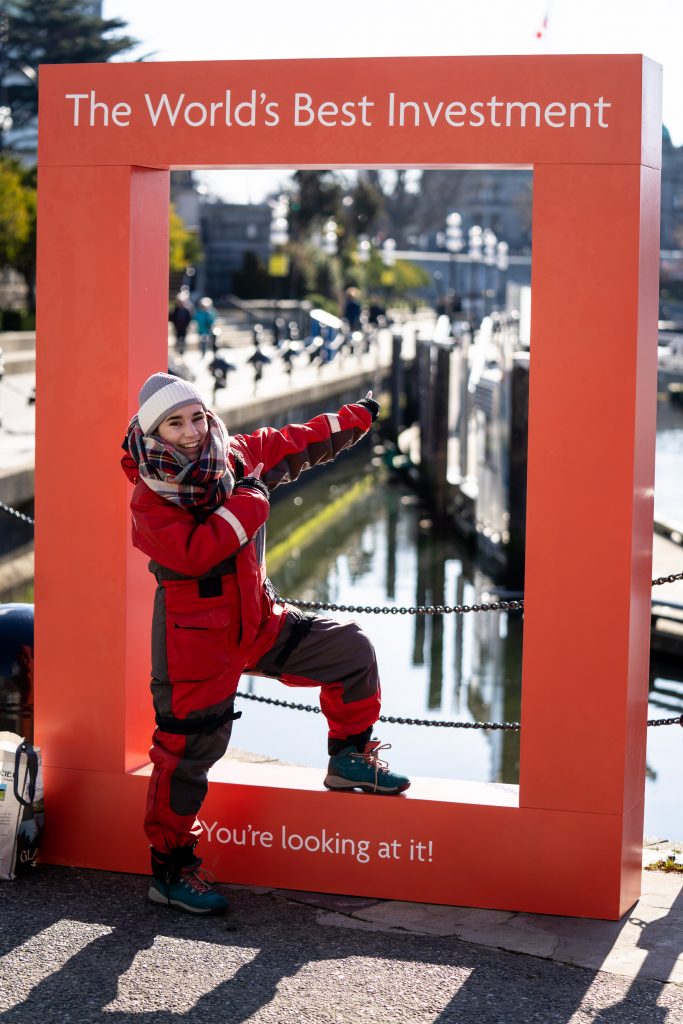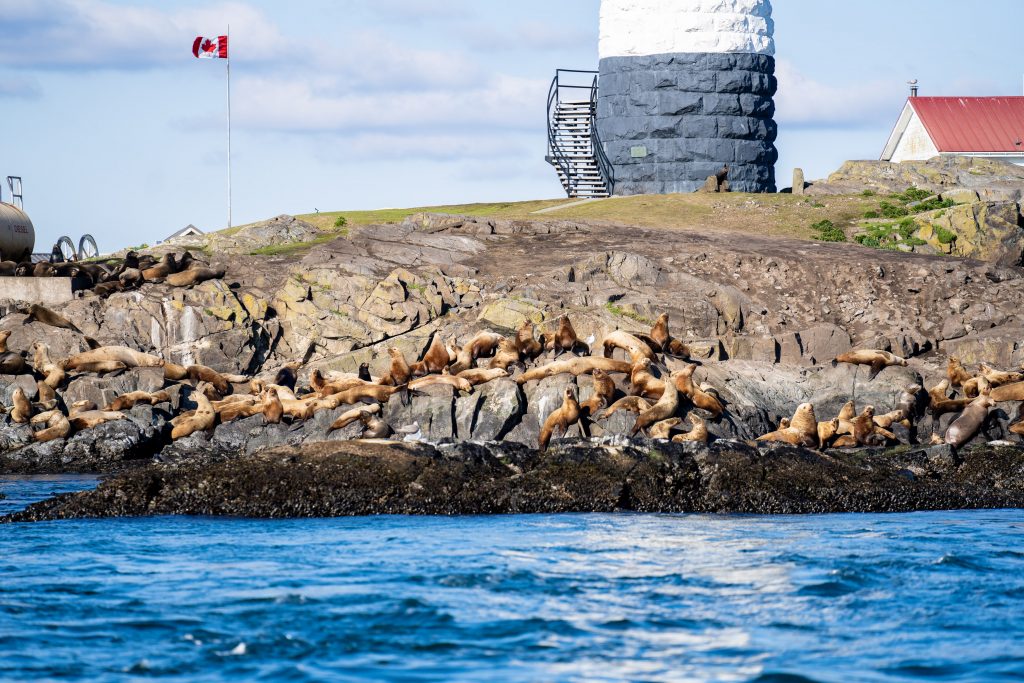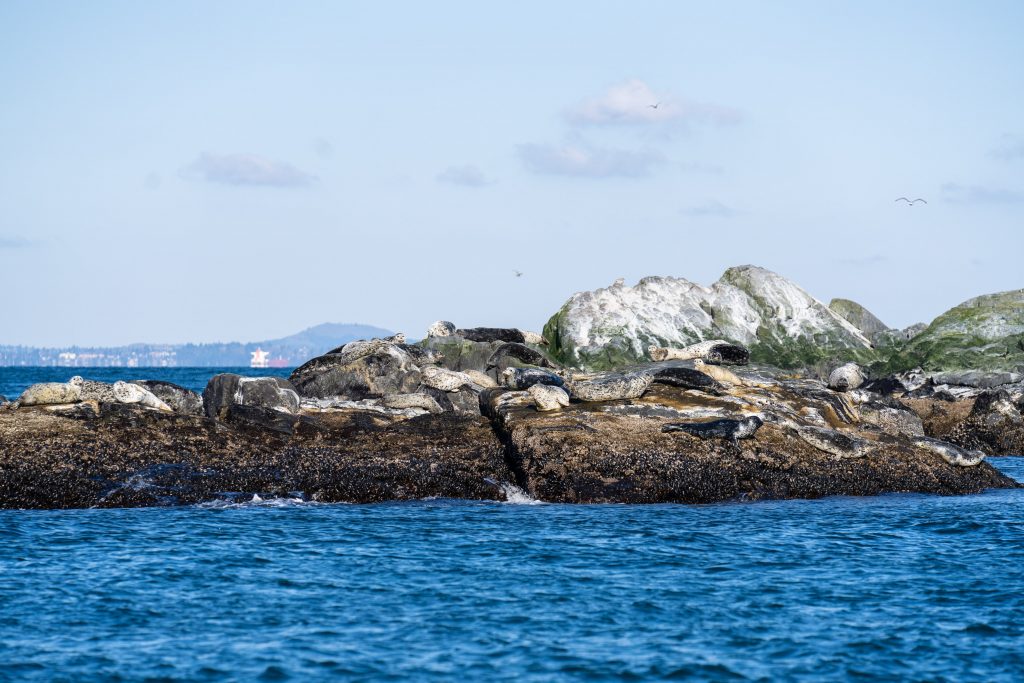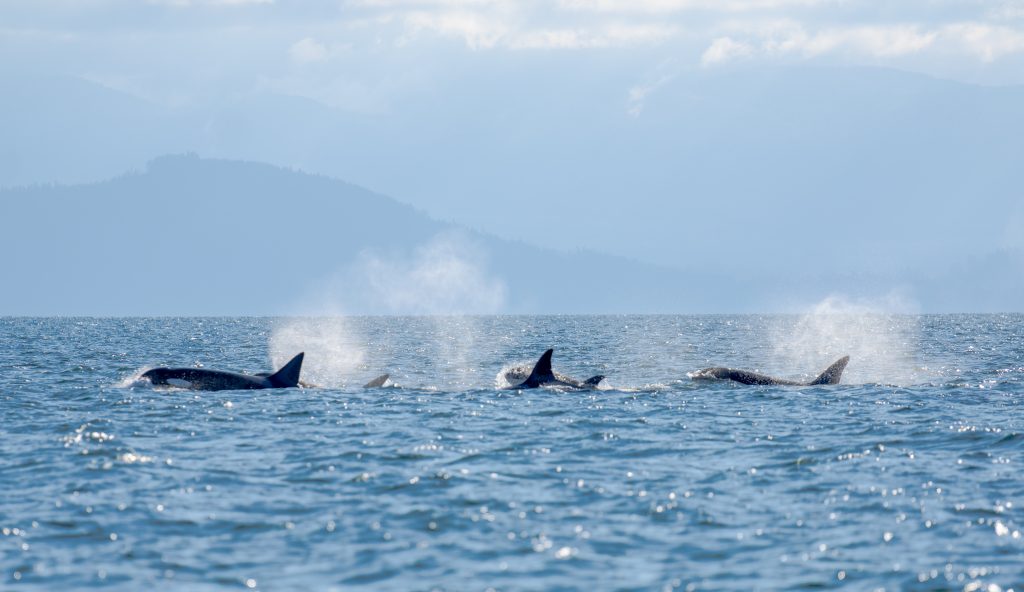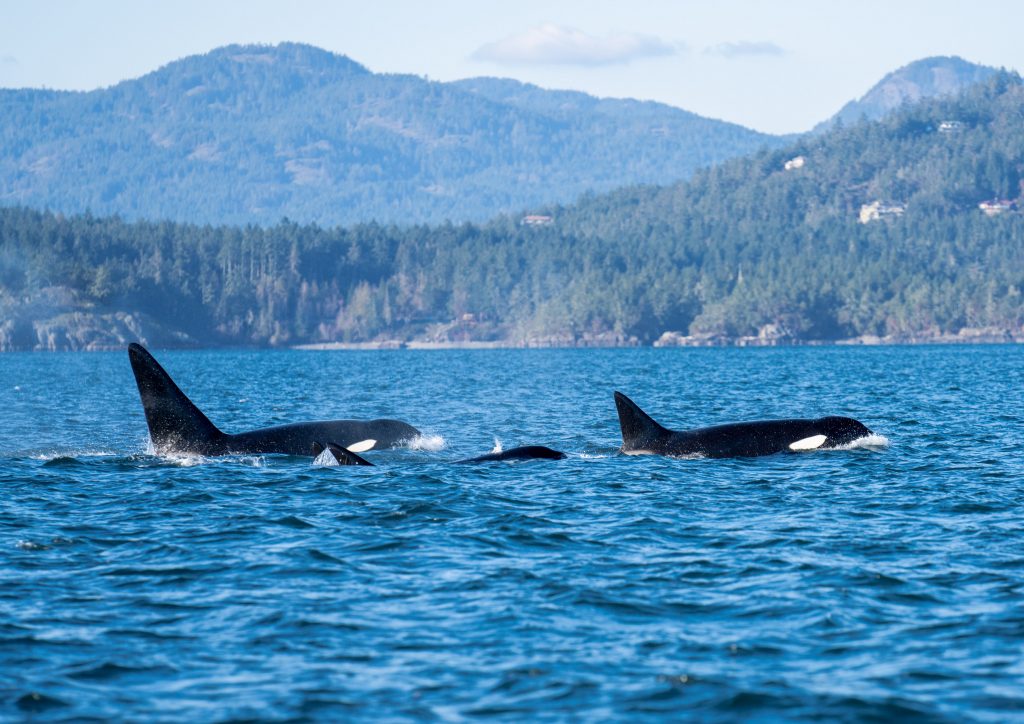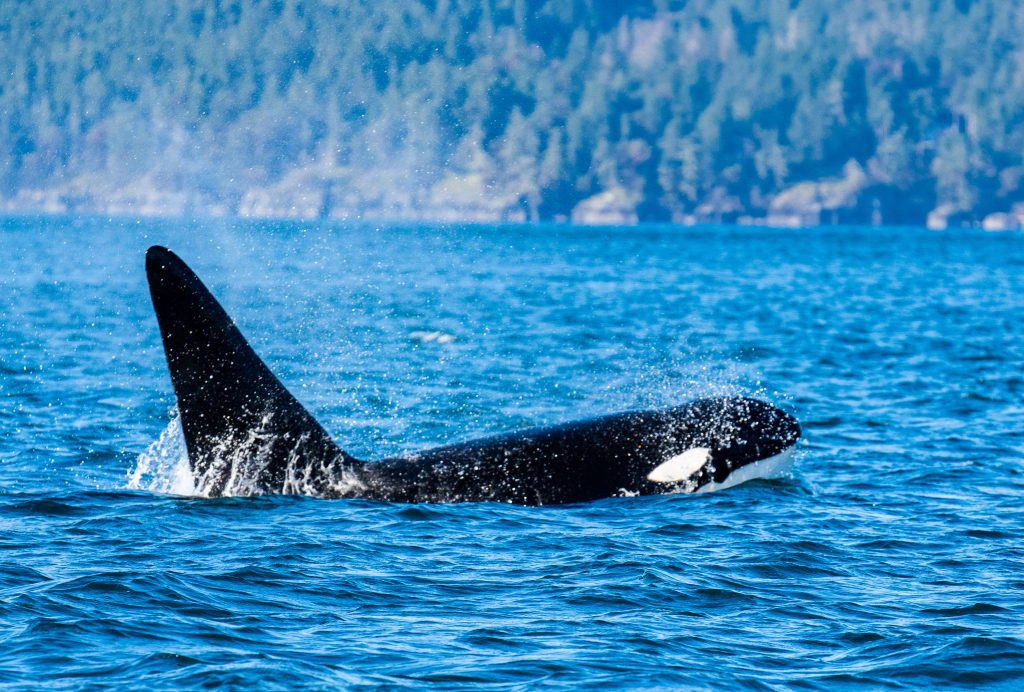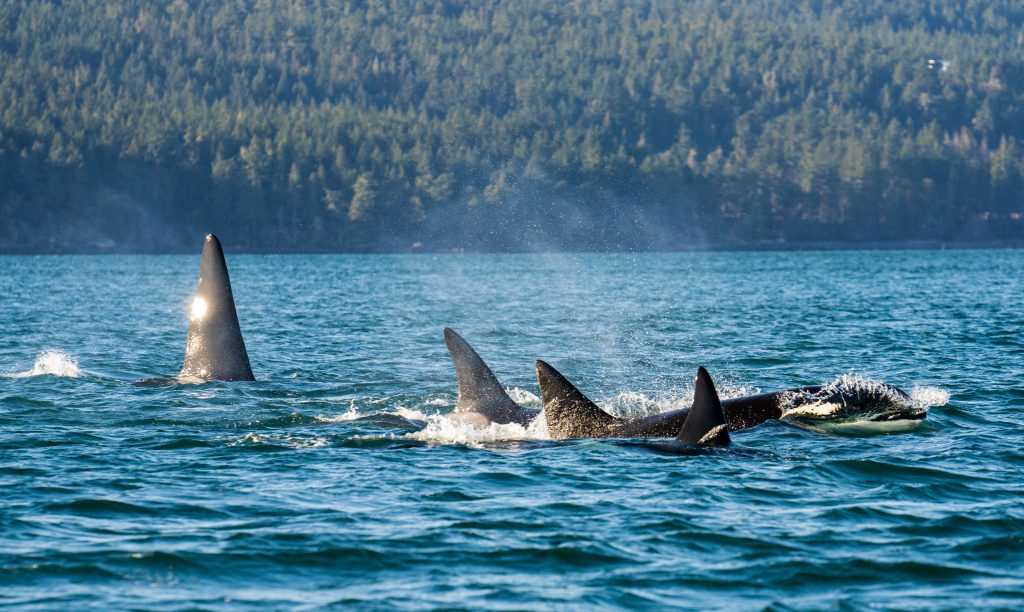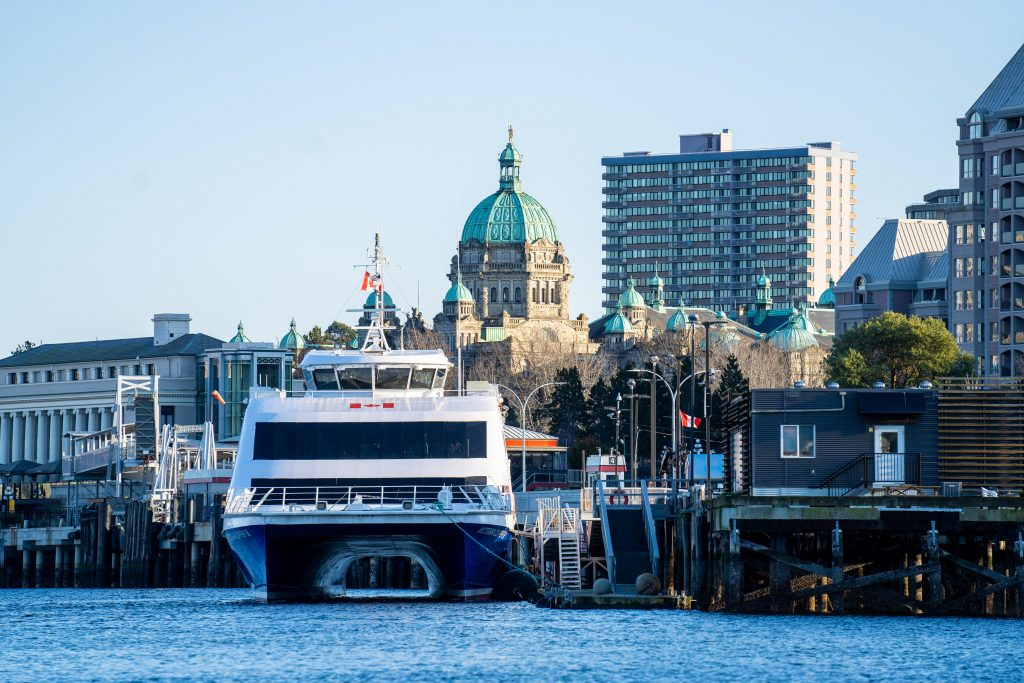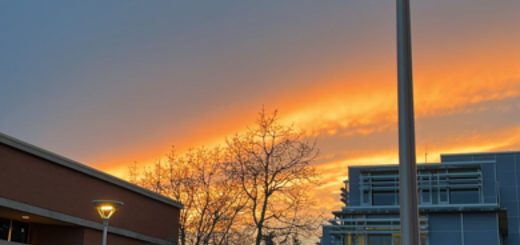Zodiacs and Mustangs: My Whale Watching Adventure
I’m a deep believer in the idea that everything has its season. I don’t expect the same out of myself that I do in February as I do in August, and I don’t expect the same plans from myself every February when it comes to Reading Break.
Last year, I took an impulsive trip to see a loved one; this year, I craved a cozy staycation, a moment to sit back and appreciate what I have.
Maybe it’s the fact that I graduate in just a few short months, but I felt a sense of peace and a voice telling me to look inward, to look around me, and see just what I’ve been lucky enough to experience before my next chapter begins.
It feels like a thankful, introspective, energy-gathering season for me, and I’m actually pleased to have stayed right here in Victoria for the entirety of Reading Break.
After some much-needed rest, I came across a great opportunity (through belonging to MyUVic Life, full disclosure), to go whale watching with Prince of Whales, a local whale watching tour in town.
As an Alaskan, I adore being out on the water, but I quickly realized I had never even considered going out on the water in Victoria and seeing the whales that I loved to spot back home. It seemed like the perfect opportunity to try something adventurous and new, while still staying grounded in my goal to appreciate my surroundings.
It was a blindingly bright Tuesday morning when I strolled down Government Street to the Prince of Whales office. We were a motley crew, with guests from the United Kingdom, Brazil, Spain, Germany, the United States, and of course, Canada. I eyed the board: recently sighted were a slew of animals that I wanted to see, including humpbacks, orcas, and sea lions.
In contrast to some tours, I would be taking a 3.5-hour tour in an open Zodiac skiff. I was familiar with these boats from my childhood, I knew that Zodiacs could be an exciting splashy ride.
We listened to a short safety briefing, then suited up. Our one-piece Mustang suits could never be called “ready for the ‘gram”, but their warmth would come in handy when day breezes would inevitably pick up and chill our faces. They’re fully weather-proof, and act as a personal flotation device in case of an emergency. If I was the type to get nervous about boating, the full safety suit would have immediately dispelled any qualms.
After getting all suited up, soon we were hopping into the banana-yellow Zodiac and settling into the dense foam-lined seats. Already I felt extremely comfortable, although I was glad I chose to bring sunglasses. The sun was sparkling off the water and refracting into my eyes, but after the rainy January we all suffered through, I didn’t mind one bit.
Our captain, Mark, eased us out of the harbor and began to tell us about the day’s itinerary. Earlier that morning, he had seen two matrilines of Biggs, also known as transient, killer whales.
The greater Victoria area sees all three distinct eco-types of orcas; each type has a different diet and is considered genetically distinct. Resident killer whales feed almost entirely on fish; while Biggs or transient killer whales eat marine mammals such as seals, sea lions, and porpoises. (The last, rarest type, offshore killer whales, eats sharks!)
These two pods in Victoria, according to our Captain, weren’t as commonly spotted. Each killer whale’s dorsal fin and patches are unique, and BC scientists have been able to identify, codify, and even nickname distinct individual whales.
One of the pods were searching for was headed by T41, a matriarch born in 1966! The group consists of her, her daughter, and the daughter’s two female offspring.
The other pod consisted of the sister of a famous BC killer whale, the long-lived Ruffles, who was actually featured in films such as Free Willy. He lived to be 60 years old, which is extraordinarily long for a male killer whale (females can reach nearly 100 years of age). His sister and her offspring still roam the area, although they are more commonly seen in Tofino than in Victoria.
Killer whales are extremely intelligent and family-based (fellow-J pod member J35 Tahlequah captured global attention when she carried her deceased calf with her for 17 days in 2018). Even just hearing about these orca whale families made me excited to see them and shocked to remember that internationally-recognized whales lived so close to where I did.
Our first stop was Race Rocks Ecological Preserve. We learned that the lighthouse that adorned the rock was imported from Scotland, and the surrounding rocky haul-outs have been a favorite spot for California and Stellar sea lions, as well as harbor seals.
When we rounded the corner, I couldn’t believe how many sea lions I saw. Tens, if not a hundred, barking, growling, and howling sea lions lazed on the rocks or slapped each other with their fins. Huge males, at least a thousand pounds each, glared at us as we floated by, while smaller specimens found cozy nooks to burrow into away from the fights for dominance.
The harbour seals we saw separated themselves from the huge blonde Stellar sea lions and the smaller, dark California ones. Their dappled grey fur and almost-comically round bodies made them look like overly plump stuffed animals.
After plenty of time ogling the adorable sea lions, our captain motored us towards Sooke in search of the two pods. Finally, we spotted the spouts of four orcas making steady headway towards Mount Baker. The smaller, rounded dorsal fins made it easy to distinguish them as females. They dove down and continued to make their way away from us.
Soon after, our skipper pointed out the second pod! They were instantly distinguishable by the largest male’s huge dorsal fin. It had to be almost six feet tall. The other three whales were smaller, and they all moved and breathed as a group. It was amazing how close they got to us!
This group seemed to love playing with us. Every time that we thought that we were pacing them as they swam underwater, the next time they surfaced, they were 500 yards behind us and swimming in the complete opposite direction. It was like a game for them to see how far they could swim in the opposite direction before we realized we were going the wrong way.
At the end of our three-and-a-half hours, they came so close to the Zodiac that I could hear their exhales as they spouted. Eventually, they joined forces with the other group, and the eight of them swam off towards Washington.
After one last look, Mark pointed the Zodiac towards the Inner Harbor. We warmed up with a cup of hot cocoa and swapped stories with the other patrons, and then suddenly I was walking back up Douglas Street to bus back to campus.
Looking back, it was a magical experience. The orcas’ obvious intelligence and playfulness made a huge impact on me. It made me realize that these beautiful animals are living and swimming around me, just a couple miles offshore, every time that I write a test or go downtown.
While I’m living my life on land, they’re living a completely different world underwater. I would encourage everyone to meet the world-famous killer whales that circle Vancouver Island, and get to know even a little about their distinct markings, family groups, and even personalities.
I loved every minute I had out on the water, and I’m so glad I got the opportunity. This reading break, I knew I wanted to stay close to Victoria and appreciate what I had, but I had no idea I would learn so much and discover a whole new (killer) world beneath the surface.
All photos by Peter Oshkai
For more about whale-watching with Prince of Whales, check out my UVic Instagram takeover below:

